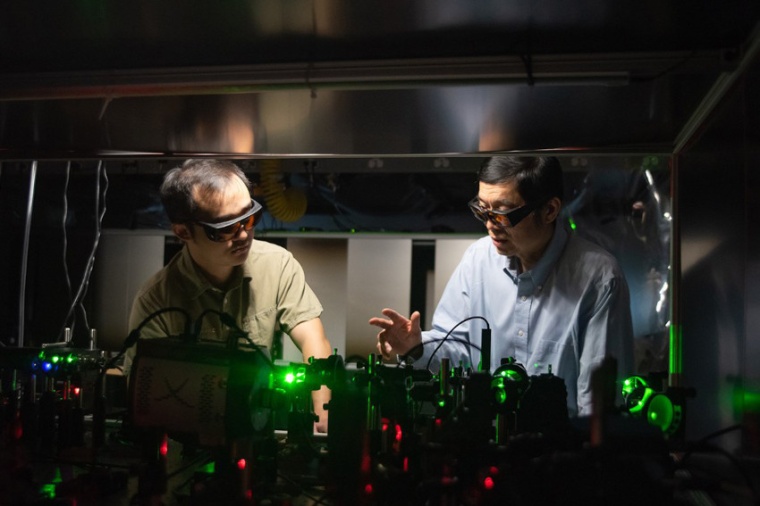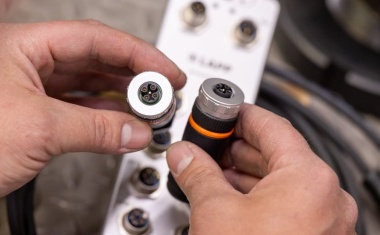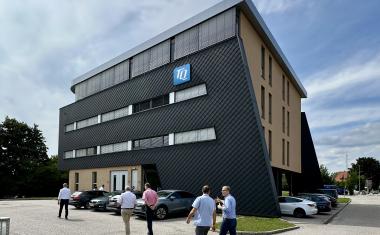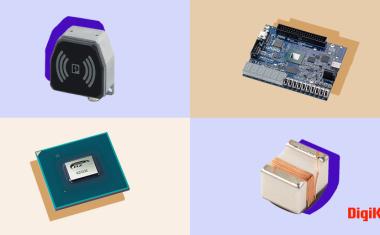Quantum entanglement doubles microscope resolution
Quantum microscopy by coincidence enables super-resolution imaging at the Heisenberg limit.
Caltech researchers have discovered a way to double the resolution of light microscopes. A team led by Lihong Wang achieved of a leap forward in microscopy through quantum entanglement. Quantum entanglement is a phenomenon in which two particles are linked such that the state of one particle is tied to the state of the other particle regardless of whether the particles are anywhere near each other.

In the case of Wang’s new microscopy technique, dubbed quantum microscopy by coincidence (QMC), the entangled particles are photons. Collectively, two entangled photons are known as a biphoton, and, importantly for Wang’s microscopy, they behave in some ways as a single particle that has double the momentum of a single photon. Since quantum mechanics says that all particles are also waves, and that the wavelength of a wave is inversely related to the momentum of the particle, particles with larger momenta have smaller wavelengths. So, because a biphoton has double the momentum of a photon, its wavelength is half that of the individual photons.
This is key to how QMC works. A microscope can only image the features of an object whose minimum size is half the wavelength of light used by the microscope. Reducing the wavelength of that light means the microscope can see even smaller things, which results in increased resolution. Quantum entanglement is not the only way to reduce the wavelength of light being used in a microscope. Due to another quirk of quantum physics, light with shorter wavelengths carries more energy. So, once you get down to light with a wavelength small enough to image tiny things, the light carries so much energy that it will damage the items being imaged, especially living things such as cells.
QMC gets around this limit by using biphotons that carry the lower energy of longer-wavelength photons while having the shorter wavelength of higher-energy photons. “Cells don’t like UV light,” Wang says. “But if we can use 400-nanometer light to image the cell and achieve the effect of 200-nm light, which is UV, the cells will be happy, and we’re getting the resolution of UV.” To achieve that, Wang’s team built an optical apparatus that converts some of the photons passing through it into biphotons. Even using this special crystal, the conversion is very rare and occurs in about one in a million photons. Using a series of mirrors, lenses, and prisms, each biphoton is split up and shuttled along two paths, so that one of the paired photons passes through the object being imaged and the other does not.
The signal photon passes through the object and the idler photon does not. These photons then continue along through more optics until they reach a detector connected to a computer that builds an image of the cell based on the information carried by the signal photon. Amazingly, the paired photons remain entangled as a biphoton behaving at half the wavelength despite the presence of the object and their separate pathways.
Wang’s lab was not the first to work on this kind of biphoton imaging, but it was the first to create a viable system using the concept. “We developed what we believe a rigorous theory as well as a faster and more accurate entanglement-measurement method. We reached microscopic resolution and imaged cells.” While there is no theoretical limit to the number of photons that can be entangled with each other, each additional photon would further increase the momentum of the resulting multiphoton while further decreasing its wavelength. Wang says future research could enable entanglement of even more photons, although he notes that each extra photon further reduces the probability of a successful entanglement, which, as mentioned above, is already as low as a one-in-a-million chance. (Source: Caltech)
Reference: Z. He et al.: Quantum microscopy of cells at the Heisenberg limit, Nat. Commun. 14, 2441 (2023); DOI: 10.1038/s41467-023-38191-4
Link: Caltech Optical Imaging Laboratory, California Institute of Technology, Pasadena, USA











